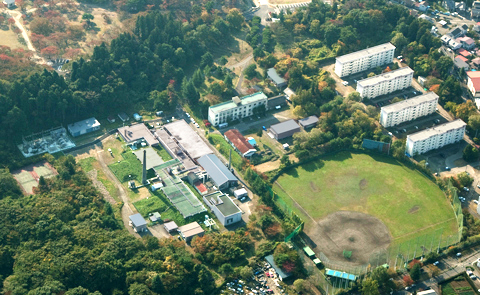电子光学研究中心于2009年12月1日成立,由前科学学院附属设施和核材料研究所(核RIKEN)改建而成,作为东北大学校园内的联合设施。第二年,2010年7月1日,该中心获得了教育、文化、体育、科学和技术部颁发的全国联合使用和联合研究中心(电子光学研究中心)的认证。自核RIKEN时代以来,国内外研究人员一直大量联合使用电子加速器,但通过国家联合使用和联合研究中心认证,该中心拥有的电子加速器已成为国内外研究人员共享的研究资源。
该中心拥有高能(1.3 GeV)电子助推器同步加速器和大功率(10 kW)低能线性加速器,并被认证为全国联合利用和联合研究中心(电子光物理研究中心)。电子束的加速能量和光束功率是日本大学拥有的最大加速器,该基地利用电子束的特点,在各种学术领域开展联合利用和联合研究,重点是基础研究。
然而,在3月11日的东日本大地震中,该中心遭受了毁灭性的破坏,包括电子加速器,该加速器是该中心的研究基地,将于2011年4月1日开始运营。地震发生后,中心工作人员在当时的中心主任清水教授的带领下进行了艰苦的恢复工作,但不仅加速器,而且相关基础设施也遭到严重破坏,因此不得不放弃恢复到地震前的样子。具有原子核E2巨大共振发现和日本第一个脉冲中子束生成的辉煌历史的300 MeV电子线性加速器作为60 MeV电子线性加速器再生,1.3 GeV同步加速器新建了90 MeV入射器,为像地震前一样提供低能量、高能电子束(和伽马射线)铺平了道路。在研究人员社区的支持下,在两年半的恢复工作之后,加速器于2013年12月恢复运行,不久将开始联合使用,并开始作为电子光学研究中心开展全面活动。

The Center for Electron Optics was established on December 1, 2009, as a joint facility on the campus of Tohoku University, converted from a former Faculty of Science subsidiary facility and the Institute of Nuclear Materials (RIKEN). The following year, July 1, 2010, the center was accredited by the National Joint Use and Joint Research Center (Electron Optics Research Center) issued by the Ministry of Education, Culture, Sports, Science and Technology. Since the era of nuclear RIKEN, domestic and foreign researchers have been using electron accelerators in large numbers, but through the certification of the National Joint Use and Joint Research Center, the electron accelerators owned by the center have become a research resource shared by domestic and foreign researchers.
The center has a high-energy (1.3 GeV) electron booster synchrotron and a high-power (10 kW) low-energy linear accelerator, and is certified as a national joint utilization and joint research center (electro-photophysics research center). The acceleration energy and beam power of electron beams are the largest accelerators possessed by Japanese universities, and the base utilizes the characteristics of electron beams to conduct joint utilization and joint research in various academic fields, with an emphasis on basic research.
However, the center suffered devastating damage during the Great East Japan Earthquake on March 11, including the electron accelerator, which is the center's research base and will begin operations on April 1, 2011. After the earthquake, the center staff carried out painstaking recovery work under the leadership of Professor Shimizu, the director of the center at the time, but not only the accelerator but also the related infrastructure was severely damaged, so they had to abandon the restoration to the way it was before the earthquake. The 300 MeV electron linear accelerator, with its illustrious history of the discovery of the E2 giant resonance of atomic nuclei and the generation of Japan's first pulsed neutron beam, was regenerated as a 60 MeV electron linear accelerator, and the 1.3 GeV synchrotron built a new 90 MeV incident generator, paving the way for the delivery of low-energy, high-energy electron beams (and gamma rays) as they did before earthquakes. After two and a half years of recovery work with the support of the researcher community, the accelerator resumed operation in December 2013 and will soon begin joint use and begin full-scale activities as an electron-optics research center.